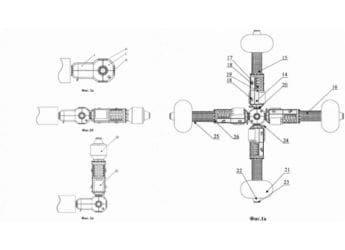- Home
- Science
- Science News
- Human Activity Creates Systemic Warming Pool in the Pacific Ocean; Causing Loss of Aquatic Wildlife, Ecology
Human Activity Creates Systemic Warming Pool in the Pacific Ocean; Causing Loss of Aquatic Wildlife, Ecology
The latest heatwave has continued for three years — from 2019 to 2021 — producing average water temperatures 6 degrees Celsius higher than normal.

Photo Credit: UHH/CLICCS/A. Barkhordarian
An image of the latest heatwave in the Pacific Ocean, observed from 2019 to 2021
Scientists have revealed that human activity — and not natural climatic variations — is causing systemic warming in a pool of water present in the northeast Pacific Ocean. Temperatures in the pool of water have seen a rise of up to 3 degrees Celsius since 1996, according to the researchers. The 3 million square kilometre body has also witnessed an increase in marine heatwaves that destroys marine wildlife and the ecology, along with a rise in temperatures due to increased greenhouse gas emissions. These have also helped cause more extreme heatwaves, like the ones observed last year in Canada and the US.
“This warming pool will continue to increase the water temperature in the future, increasing both the frequency and intensity of local marine heatwaves. The sharp increase in average water temperature is pushing ecosystems to their limits,” said Dr. Armineh Barkhordarian, one of the authors of the study that was published in the journal Nature Communications Earth and Environment.
The body of warmed water has resulted in marine heatwaves that devastate aquatic wildlife and the ecology in the surrounding areas. One of these events — the Pacific Ocean Blob — struck in the years 2014-2015, resulting in seabirds and marine mammals dying in large numbers, the formation of toxic algal bloom, and declining marine productivity. As a result of the heatwave, the west coast of the US also faced extreme drought as climatic patterns were disturbed.
“More frequent and extreme marine heatwaves are a serious burden for affected ecosystems. This not only poses a tremendous threat to biodiversity; it can also push these marine ecosystems past a tipping point, after which they can no longer recover,” said Barkhordarian. “The discovery of the long-term warming pool will now provide us with crucial information on the likelihood of such extreme events in the future.”
The latest heatwave has continued for three years — from 2019 to 2021 — while producing average water temperatures 6 degrees Celsius higher than normal. With water temperatures in the pool increasing at a rate of 0.05 degrees Celsius per year for the last 25 years, summers now lasting over an entire month longer, and the pool cooling down less during the winters, more heatwaves are expected to follow.
Get your daily dose of tech news, reviews, and insights, in under 80 characters on Gadgets 360 Turbo. Connect with fellow tech lovers on our Forum. Follow us on X, Facebook, WhatsApp, Threads and Google News for instant updates. Catch all the action on our YouTube channel.
- Samsung Galaxy Unpacked 2025
- ChatGPT
- Redmi Note 14 Pro+
- iPhone 16
- Apple Vision Pro
- Oneplus 12
- OnePlus Nord CE 3 Lite 5G
- iPhone 13
- Xiaomi 14 Pro
- Oppo Find N3
- Tecno Spark Go (2023)
- Realme V30
- Best Phones Under 25000
- Samsung Galaxy S24 Series
- Cryptocurrency
- iQoo 12
- Samsung Galaxy S24 Ultra
- Giottus
- Samsung Galaxy Z Flip 5
- Apple 'Scary Fast'
- Housefull 5
- GoPro Hero 12 Black Review
- Invincible Season 2
- JioGlass
- HD Ready TV
- Laptop Under 50000
- Smartwatch Under 10000
- Latest Mobile Phones
- Compare Phones
- Huawei Nova 15
- Huawei Nova 15 Pro
- Huawei Nova 15 Ultra
- OnePlus 15R
- Realme Narzo 90x 5G
- Realme Narzo 90 5G
- Vivo S50 Pro Mini
- Vivo S50
- Asus ProArt P16
- MacBook Pro 14-inch (M5, 2025)
- Huawei MatePad 11.5 (2026)
- OnePlus Pad Go 2 (5G)
- Huawei Watch 10th Anniversary Edition
- OnePlus Watch Lite
- Acerpure Nitro Z Series 100-inch QLED TV
- Samsung 43 Inch LED Ultra HD (4K) Smart TV (UA43UE81AFULXL)
- Asus ROG Ally
- Nintendo Switch Lite
- Haier 1.6 Ton 5 Star Inverter Split AC (HSU19G-MZAID5BN-INV)
- Haier 1.6 Ton 5 Star Inverter Split AC (HSU19G-MZAIM5BN-INV)












